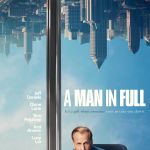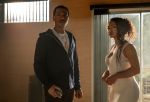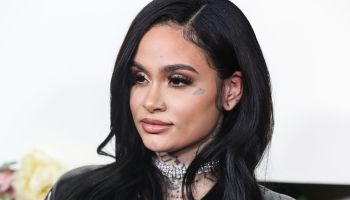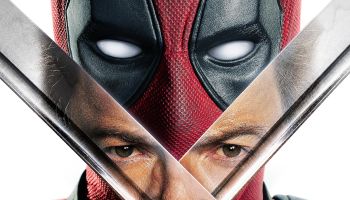The 12th Annual Art For Life Fundraiser at Russell Simmon’s East Hampton estate is just days away and GlobalGrind is speaking to this year’s Honorees, individuals recognized by RUSH Philanthropic for their positive contributions to their communities through giving.
Watch this space daily to learn about the work of committed individuals who care about the next generation of leaders, thinkers and doers: children. You can also visit www.rushphilanthropic.org to donate and to inspire a RUSH Kid and Text RUSH to 50555.
Your $10 donation will help continue support Rush Kids and their groundbreaking education programs!
Last Friday we spoke to Honoree Edward Norton.
PHOTOS: Edward Norton Exclusive Interview
Today we spoke to Kimberly B. Davis, President JP Morgan Chase Foundation.
Ms. Davis is a graduate of Spelman College and has over 25 years of philanthropy experience. Ms. Davis is responsible for JP Morgan’s philanthropic activities globally.
Additionally, Ms. Davis is co-founder of Springboard, Partners in Cross-Cultural Leadership, a leadership education and consulting company committed to building strong women (and other diverse) leaders. She was active in developing, designing and implementing a national leadership center in collaboration with Spelman College. Known as Spelman LEADS, the center focuses on unique leadership issues for Women of Color.
GlobalGrind: First off, let us say congratulations in being recognized by Rush Philanthropic. Can you tell us what this recognition means?
Kimberly Davis: Well, first, I just think the world of the work that RUSH is doing and what the Philanthropic Arts Foundation is doing, specifically what Russell and his brothers are doing: providing support to disadvantaged youth using arts as a medium, what this means for me is multifold. First, it means that the work that we’re doing at JP Morgan Chase and the Arts Education Space has really become more than just about big cultural sponsorship and periodic good deeds. I think what it shows, and what this recognition acknowledges, is just that we really have established a track record for substantive programming in arts education; particularly at the neighborhood level for disadvantaged youth. We have worked hard to establish that reputation and we’re serious about that. I take that personally as a part of my leadership and what I think is important for communities, because art has been a part of my life for so many years.
[pagebreak]
How did you first get introduced to art? Was it through school or was it your family?
It was through my family. I have an uncle, he’s not a blood relative but I, indeed, grew up with him like he was a blood relative. His name is Calvin B. Jones and he was an artist, painter, illustrator and muralist in Chicago. He died last August. Actually, we’ll be celebrating the first anniversary of his death on August 21 this year, he died in 2010. He was a young aspiring artist in the ’50s. He’s my actual blood uncle’s best friend and he was awarded a full scholarship to study at the Art Institute of Chicago in 1957, which was really unheard of for a young Black man. He worked in advertising for a number of years and then in the late ’60s, early ’70s, he left advertising to become the co-director of the Avant-Garde African-American Gallery Studio and Cultural Center in Chicago. He painted marvelous murals, he collaborated with Mitchell Canton, who you may be aware of. He did one huge mural in Detroit and one in Atlanta and in Chicago, there is a huge mural called “The Builders of the Cultural Present” on 71st and Jeffery. Another one, called “A Time to Unite,” is on 41st and Drexel in Chicago. I grew with him, I grew up around him, and I have much of his art in my home. I was very inspired by him. They say many great artists go unknown until they die, so hopefully you will know more about him as he has passed away.
In addition to your uncle, do you have any other favorite artists?
Yeah, a couple of female artists, actually, two are my favorites. One is a sister Spelmanite of mine, I’m a Spellman alumni, and she was too: Barnet Honeywood, a well known artist and illustrator. I have a lot of her pieces. What I love about her work is her use of color, light and patterns; just so vibrant. I love her work! The other person I have collected over for many, many years is Elizabeth Catlett, as you know, who was an African sculptor and print maker. I love her sculptures; she’s one of my favorite sculptors and just always enjoyed her work. I have a number of her pieces as well.
You studied finance at Spelman. Were you always interested in finance?
Yeah, my grandfather always said that somehow or another I’m going to be a businesswoman, when I was a little child. He always said that I was mature beyond my years so, I guess, I was a little woman [Laughs]. But I‘ve always been interested in business. I really do think that in order to do good, you have to do well. That’s one of the things I say to young people all the time when they say they want to go into Philanthropy. I say it was a 15-20 year journey before I actually ended up doing a job in philanthropy. I spent many years in finance and marketing, human resources, so my career was quite eclectic. Because of all of that experience and business grounding, I think I was able to bring a unique perspective to our giving and our approach to giving. I do think in order for you to do good, you have to do well first, so I’m a big proponent of doing well and then doing good.
[pagebreak]
Is that the advice you would give any young person who’s interested in joining your profession?
Yes! Get some experience under your belt and learn a business. Develop a really strong core competency in an area that is transferable, and build your asset and then you’ll be in a position to contribute much more to society and to the passions that you have.
Other than finance, was there anything else you considered doing?
Finance is as broad as it is wide. I started my career in the insurance industry back in the late ’70s, early ’80s and then transitioned from insurance to financial services. I’ve been with JP Morgan for 20 years but I been through eight mergers so it’s been like eight different companies and I’ve done a host of jobs. It’s really not fair to say that I’ve only been in finance because of the breadth and depth of the opportunities you have in such a large organization; and I’ve really been able to do so many things both in line and staff jobs.
What does it mean to be recognized by “Fast Company” as one of the 100 Most Creative Persons in Business, Finance and Philanthropy? What does that type of recognition mean to you?
That was pretty cool because one of the things I love about my job, and my company, is that I’m able to bring my authentic self to work and to be successful in doing that. The recognition in “Fast Company” really was the acknowledgement by them that in my job managing this huge portfolio of about almost $200,000,000 dollars of annual giving, that in a large company with over 240,000 employees, I’m still able to be very entrepreneurial and to be able to bring innovation and creativity to the work place. That was a nice acknowledgement of the balance of you working in a large company and still bringing authentic self, still being very creative and entrepreneurial and still contribute in a significant way.
Above: Kimberly B. Davis with Charlie Rose WNET President Neal Shapiro, Google CEO Eric Schmidt and NYSUT President Dick Iannuzzi.
[pagebreak]
Are there any projects that you like to share, that you are working on? Anything that you feel deserve some press or some light?
One of the things that I’m really proud of is, a year ago we launched a program that was really my brainchild called The Fellowship Initiative. What we done, and we’ve been working on it the past four years (but we actually launched it a year ago) is we looked at the plight of young men of color, Black and Hispanic, in the New York city area. All of the summits and talking and white papers have been written about the issues, but nobody is really taking a highly detailed and customized approach to this population. We went out to the ten worst performing high schools in New York City and recruited over 200 young men, which was a vigorous evaluation and recruiting process. We wiggled that group down to 32 young men that we put into a program that we will track. They were in 8th grade when we brought them into the program and we will track and follow them through high school, through college, and to the world of work.
Our thesis is that if you engage early, both the young men and their families, and you will get them to sign a contract saying they are committed to extended learning. They all go to school year round, even on Saturdays and they and their families will have committed to it. They all have men as mentors who are sticking with them for the next eight years. We’re providing them with the full array of support that they need: summer experiences, jobs, psycho-social support. The thesis is if you provide the same kinds of supports and services that affluent kids get everyday and you do that consistently and you get them early, then we will end up with a much better product for the world of work in the 21st century. Our view is that if JP Morgan can take 32 of these young men and we get 100 corporate fortune 500 companies to do the same, we can really begin to start solving some of these dire issues that we have in our urban centers around young men of color. It’s unique, it’s different, no other corporation is doing it, and I just think it’s a marvelous way to show that companies have to take a significant role in helping to change the face of their companies, and change the face of the conditions that our young men of color are facing.
Above: Louise Mirrer, Kimberly Davis & Beverly Daniel Tatum.
















